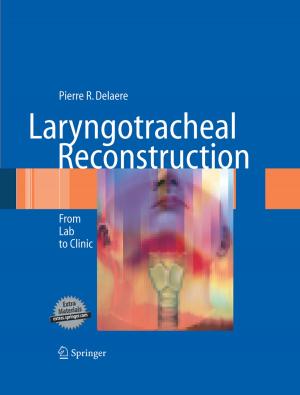The Cranial Nerves
Anatomy · Pathology · Pathophysiology · Diagnosis · Treatment
Nonfiction, Health & Well Being, Medical, Surgery, Neurosurgery| Author: | ISBN: | 9783642679803 | |
| Publisher: | Springer Berlin Heidelberg | Publication: | December 6, 2012 |
| Imprint: | Springer | Language: | English |
| Author: | |
| ISBN: | 9783642679803 |
| Publisher: | Springer Berlin Heidelberg |
| Publication: | December 6, 2012 |
| Imprint: | Springer |
| Language: | English |
No special field of surgery dealing with the cranial nerves exists today. This is not surprising in view of the characteristics of this group of morphologically and topo graphically heterogenous nerves. Morphologically we must differentiate between central nerves (I, II and VIII) and the so-called peripheral nerves (nn. III to VII and IX to XII), in which post-lesion rgeneration is quite different. Anatomo-topographi cally we must consider an intracranial and an extracranial part of each cranial nerve. For practical reasons at operation, further subdivisions of the intracranial course of cranial nerves are to be distinguished in the anterior, middle and posterior cranial fossae as well as within the petrous bone. This underscores the extensive tasks awaiting surgeons operating in the ventral part of the brain and facial skull as well as in the more dorsal part of the skull and neck. This very wide field cannot be covered by a single surgical discipline alone. In our opinion, considerable progress has been made in surgery of the cranial nerves only in recent years. This may be explained by the increased mastery of microsurgical techniques by all surgeons in terested in the surgery of the base of the skull as well as with the initiation of more interdisciplinary consultation and jointly performed operations. Possibilities of fu ture development can be discerned in the text. The base of the skull separating the extra-and intracranial part of cranial nerves should not be a barrier but a connect ing link.
No special field of surgery dealing with the cranial nerves exists today. This is not surprising in view of the characteristics of this group of morphologically and topo graphically heterogenous nerves. Morphologically we must differentiate between central nerves (I, II and VIII) and the so-called peripheral nerves (nn. III to VII and IX to XII), in which post-lesion rgeneration is quite different. Anatomo-topographi cally we must consider an intracranial and an extracranial part of each cranial nerve. For practical reasons at operation, further subdivisions of the intracranial course of cranial nerves are to be distinguished in the anterior, middle and posterior cranial fossae as well as within the petrous bone. This underscores the extensive tasks awaiting surgeons operating in the ventral part of the brain and facial skull as well as in the more dorsal part of the skull and neck. This very wide field cannot be covered by a single surgical discipline alone. In our opinion, considerable progress has been made in surgery of the cranial nerves only in recent years. This may be explained by the increased mastery of microsurgical techniques by all surgeons in terested in the surgery of the base of the skull as well as with the initiation of more interdisciplinary consultation and jointly performed operations. Possibilities of fu ture development can be discerned in the text. The base of the skull separating the extra-and intracranial part of cranial nerves should not be a barrier but a connect ing link.















